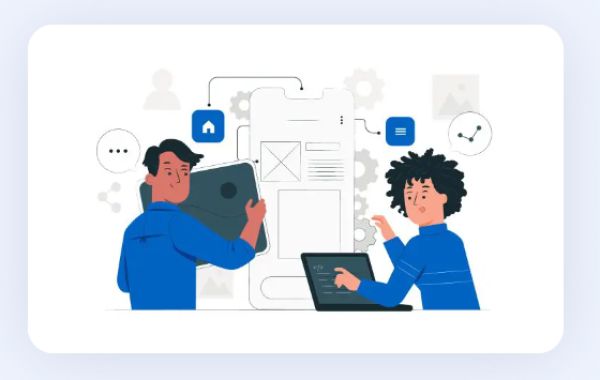In today's digital landscape, mobile applications have become indispensable tools that seamlessly integrate into our daily lives. From social networking to productivity enhancement, these apps play a pivotal role in keeping us connected and efficient. Behind the captivating user interfaces lies a sophisticated backend architecture that fuels their functionality. In this article, we delve into the world of mobile app backend development, uncovering its significance, key components, and best practices.
The Significance of Mobile App Backend Development:
The mobile app backend serves as the heart of an application, responsible for managing data storage, user authentication, business logic, and interactions with third-party services. It acts as a bridge between the user interface and the server, ensuring a seamless flow of data and communication. A well-crafted backend contributes to faster load times, secure data handling, and a delightful user experience.
Key Components of Mobile App Backend:
Server: The server forms the foundation of the backend, handling requests from the client-side app and responding with relevant data. It can be implemented using various technologies, such as Node.js, Ruby on Rails, or Python Django, depending on the app's requirements.
Database: Databases store and manage the app's data, ranging from user profiles to application-specific content. Developers can choose from SQL databases like MySQL or PostgreSQL for structured data or NoSQL databases like MongoDB for more flexible, unstructured data storage.
APIs (Application Programming Interfaces): APIs enable communication between different software components. Mobile apps use APIs to interact with the backend, fetching data and sending user input. Well-designed APIs ensure efficient data transfer and a seamless user experience.
Authentication and Security: Ensuring user data security is paramount. Backend developers implement authentication mechanisms like OAuth or JWT to safeguard sensitive user information. Encryption techniques like SSL/TLS further enhance data protection.
Push Notifications: Backend systems manage push notifications, delivering timely updates to users even when the app is not actively in use. Services like Firebase Cloud Messaging or Apple's Push Notification Service play a crucial role here.
Benefits of a Robust Mobile App Backend:
Scalability: A well-architected backend allows for effortless scalability as user numbers grow. Load balancing and server optimization strategies ensure consistent performance, even during peak usage.
Customization: A robust backend enables personalized user experiences by tailoring content and functionality based on user preferences and behaviors.
Analytics and Insights: Backend systems collect valuable user data, providing insights into user behavior and app performance. This data informs updates and improvements.
Best Practices for Mobile App Backend Development:
Plan for Growth: Anticipate future user loads and design a backend that can scale accordingly. Employ cloud-based services for elastic scalability.
API Design: Prioritize a clean, intuitive API design that minimizes unnecessary requests, reducing load times and enhancing user experience.
Security First: Implement robust security measures to protect user data from potential breaches. Regularly update libraries and frameworks to address vulnerabilities.
Regular Testing: Thoroughly test backend components to identify and rectify performance bottlenecks, security flaws, and compatibility issues.
In conclusion, mobile app backend development is the unsung hero behind captivating and seamless user experiences. By understanding its significance, components, and best practices, developers can craft backends that empower their applications to thrive in today's competitive app market. A well-structured backend not only ensures optimal performance but also paves the way for app scalability and user satisfaction.







